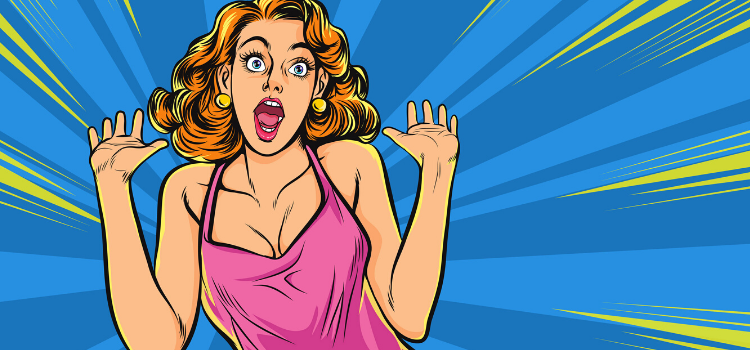
Passive vs. Active Characters: From Zero to Hero
From romance to Russian Lit, and memoir to middle-grade, almost all bestselling stories are centered around active protagonists. Understanding the difference between passive vs. active characters is vital in terms of reader engagement and commercial viability.
So why are active characters so important? Let’s start by looking at why humans are drawn to stories in the first place. In addition to providing basic entertainment, storytelling offers us a precious opportunity to explore the universal story of human experience. Transcending loss. Being transformed by love. Overcoming hate. We live vicariously through a character’s struggles, growth and ultimately, triumph.
But at the heart of each journey is one vital ingredient, and it’s here that we discover the key to crafting an active character:
Desire.
Deep, life-changing desire pushes a character to take action and thereby become active, vs. passive. Active characters make decisions, take risks, and learn from their mistakes along the way. As the captains of their own destiny they push the story forward, even in the face of incredible opposition.
An active character—hero or villain—wants something so badly, they’ll risk their health, wealth, relationships and sanity to go after it, and by crystallizing a character’s deepest needs and giving them a goal of vital importance, we encourage the reader to empathize and become invested in their cause. After all, if the protagonist doesn’t care overmuch, why should we?
Let’s Meet Some Passive vs. Active Characters…
A rogue bear is terrorizing a village, and several victims have gone missing. Mr. Pete Passive sits in a barn with his sheep and pigs, a gun placed across his lap, hoping to be spared from the beast’s hunger. The barn doors are flimsy, and he’s pushed some rusty farm equipment up against them. But the grizzly is said to be huge, and smart. It only attacks at night.
All Pete can do is wait.
Nearby, Ms. Anna Active sits on the roof of her farmhouse, braving the cold as her sister and young children huddle inside. A haunch of meat hangs from the pear tree in her yard. Her rifle is cocked, and trembles in her hands. But she’s had enough. She must destroy the creature once and for all, even if her sister swears her plan is madness. Will the bear appear before she passes out from the cold? And if it does, will she kill it before it reaches her house?
Both characters are driven by the same basic needs: survival, protection of others, and restoring peace. Both Pete and Anna are dealing with a powerful external antagonist. But which scene would you rather read?
Passive vs. active characters are as different as night and day. Anna is the more appealing character because she has taken her fate, and that of her family’s, into her own hands. She can’t control the fact a rogue bear is attacking their community, but she has a gun and a plan, and believes she is the only person who can save her family. As a result, her predicament is far more emotionally engaging. After all, she could very well draw the bear to the house and cause someone she loves to get terribly hurt, risking a lifetime of shame and guilt. She’s spent all their savings on a hunk of meat, and is more likely to catch influenza than a rogue bear. But Anna is exceptional – the only figure who will risk everything to pursue her goals. By taking action she’s ‘earned’ the right to kill the bear, and win her happy ending.
In comparison, passive characters play it safe. Anna’s sister thinks she’s crazy, and—like Peter Passive—is paralyzed into inaction, opting for the simplest, most expedient response, and waiting to see what happens. Sound familiar? Most of us live our lives this way. But fiction is larger than life, and your protagonist should be too. That’s why passive characters are most often side characters, while active characters take center stage as the protagonist/antagonist.
6 Signs Your Character is Passive
- As a writer, you’re more plot-focused than character-driven. You’ve got a great story idea, and you’re trying to fit your hero into an existing set of events. Most of the drama in the story is milked from the external (world) problems, instead of your protagonist’s internal choices and actions.
- Your scenes feel episodic; a series of one-off events that lack the cohesion of a greater plot arc and purpose.
- The protagonist is often waiting for the antagonist to make their move, and reacting instead of acting.
- The protagonist doesn’t have a clear goal or mission of their own, that’s personal to them on some internal level.
- Your hero is a kind of ‘everyman’ or woman, without big personality traits, flaws, or gifts. They might even be an author surrogate.
- The central story theme (revenge, justice, love, control, power, etc.) remains murky.
Sound familiar? Don’t worry, driving your passive character towards action is easier than you think.
4 Solutions for Passive vs. Active Characters
- Dig deep into discovering your character’s needs and wants, and in turn, what they lack in order to be truly happy. If they have a desire for revenge, a longing for love, or a fear of rejection, those are all great catalysts for forming a plan and taking action.
- Challenge these needs with triggers in the form of external events or characters. I.e., if your protagonist is obsessed with ‘keeping up appearances’ then maybe her daughter’s new boyfriend is totally socially inappropriate. Or to return to our struggling single mother Ms. Anna Active, introducing a man-eating bear into her world directly conflicts with her intrinsic desire to protect and provide.
- Lean into the pain. It’s common to fall into the trap of solving a character’s problems quickly and painlessly. But an interesting character is not blameless. They are driven by strong motivations that might make them impulsive. They have blind spots as a result of their ambition. They take risks and engage in confrontations that regular people (especially introverted writers) would shy away from. They care, oftentimes too much. Let the character fail at times, and work hard for their redemption. The path of least resistance keeps them from earning and owning their final triumph.
- Give your character new goals as they shift and grow. For example, in an effective character introduction, we might focus the first act on Anna’s goal to kill the bear. But when her sister is accidentally killed in the process, a new goal forms in the second act: to punish herself and live in misery, as penance for her mistake. When the village fair is being planned and a shooting competition is announced, including a cash prize Anna desperately needs, she must face ghosts of the past to pick up her gun once more and redeem herself.
Of course, every writing rule comes with exceptions.
I can almost hear the literary folk out there, crying out that their favorite character of all time is a passive protagonist. And they’re right; some great books do feature passive characters, but these works tend to be extremely idiosyncratic, personality-driven narratives by authors who could make munching on an apple seem endlessly interesting. For those of us lesser mortals, creating an active character puts us one big step closer to writing something people actually want to read. Old Pete Passive might be an intriguing man who spends hours each day pondering life’s mysteries, but save his story for when you’ve got some successful books under your belt and you’re ready to break all the rules.
Concerned your protagonist is playing it safe? Apply for an Introductory Edit and gain professional feedback.
Or, post your comments about passive vs. active characters below!


“You’ve got a great story idea, and you’re trying to fit your hero into an existing set of events.”
This is why I recently scrapped a WIP I spent seven months working on. It was either/or. The protagonist and the story didn’t seem to get along, but removing one or the other (especially the story…) caused the whole thing to fall apart. Oh well. Lesson learned.
At the same time, in the novel I am finishing I have a passive character on purpose. As in, he’s doing all he can to be left alone to his passivity (so that’s his main desire), but the community surrounding him and the events happening around him won’t allow that. I hope this will work for the readers as well as it works in my head…
That sounds great, Bjorn. And if the character takes action to fulfill his need for isolation (avoiding people walking nearby, hiding the entrance to his home etc.) then he’s still being active, in that he has a clear desire, as opposed to apathy. Even if the desire is relatively benign, you’re ensuring the reader empathizes with his goals and motivations and his efforts to pursue them.